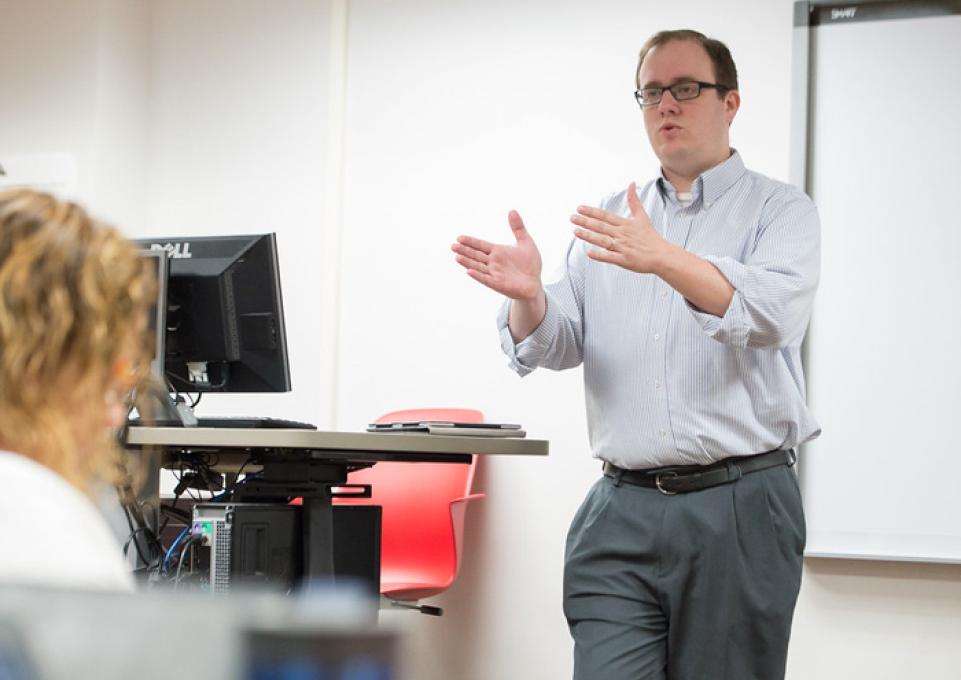
Eric Dolph, an architect and assistant professor of interior design at Buffalo State, will present research on virtual reality (VR) versus traditional learning at the Learn X Design 2017 conference in London, England, on June 28.
He will present his paper, “Virtual Spatial Discovery for the Novice Design Student,” before a conference of design educators who use technology in innovative ways.
“I’ve been trying to implement more virtual reality into the classroom as a way for students to explore what tools are available to them,” said Dolph, who worked as a professional architect for a decade before joining the Buffalo State faculty in 2014. “What I wanted to find out through this project was how effective virtual reality is for students just starting out in the interior design discipline. I wanted to catch them early before they were familiar with the architecture vocabulary.”
Last fall, through the campus’s Fostering Innovation in Teaching with Technology (FITT) Academy, Dolph investigated the use of 3D modeling software to enhance spatial understanding. His subjects were 14 first-year students in his Digital Presentation Methods course.
He divided the class into two groups to study the iconic Villa Savoye building in France. One half viewed it through a Google VR device while the other half used photographs, drawings, and verbal discussions. Beforehand Dolph had tested students’ spatial aptitude so that he could evenly divide them by their abilities in that area.
“I wanted to determine if VR is a more intuitive way for students to understand spatial complexity,” he said.
Interestingly, the seven students who used VR reported that they had a higher level of confidence in their understanding than the students who studied the building through traditional means. However, when they filled out a questionnaire afterward about the Villa Savoye, the VR students scored much lower than the other students.
“They thought they got it, but they didn’t,” Dolph said. “If we’re going to be using VR in the industry, I think we have to be careful how we use it.”
The caveat from these findings is that the sample size was very small. Dolph said he plans to expand the research in the fall with architecture students at the University at Buffalo (UB).
“What I want to determine is how we can use these two technologies to complement one another,” he said. “This is a wide-open field. Because it’s so new, there are so many options available as to where we can go with it. Regardless of the outcome of this second study, I do think students who have a basic level of confidence in using VR provide an extra value to employers in the architecture and interior design industries. Companies can use VR with a client who doesn’t have the language and knowledge of an architect to better understand a project.”
During the FITT Academy last fall, Dolph was one of six Buffalo State faculty members who used technology in a hands-on project. He said he’s grateful to David Demers, Buffalo State’s chief information officer and vice president for enrollment management, marketing, and communication, who oversees FITT and made his research possible.
“Without his investment,” Dolph said, “the project, paper, and conference presentation could not have happened.”
